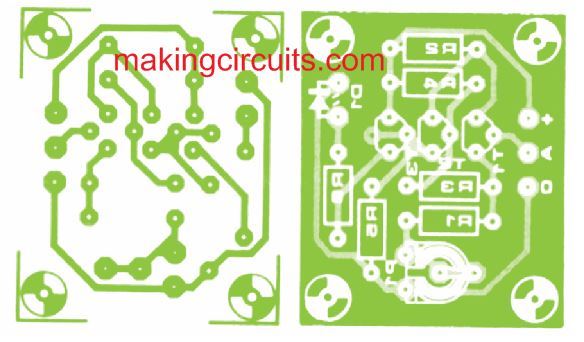This brake lights monitor circuit is used to monitor the brake lights of a car and tell if they are both working through an LED illumination. This ensures both road safety and prevention of fines due to faulty brake lights.
The design works by detecting the drop in the voltage supply to the lamps, which must be at least 0.6 V.
If that is not so, it should be amplified using 5 A diodes in series with each of the lamps.
How the Circuit Works

A Schmitt trigger formed from T1 and T2 is used to create the response to the voltage drop, which is the lighting of D1 through T3.
LED D1 will light for a moment when pressing the brakes due to the switch-on current to one lamp if the other is defective. If both are not working, D1 will not light up at all. Thus, all possible scenarios are covered through the LED illumination.
P1 is used to control the hysteresis of the trigger and thus, the circuit sensitivity within narrow limits. It is best to set the preset condition with one lamp off and D1 lighting momentarily.
If you do not like a light, ie, D1, lighting up each time you press the brakes, you can replace the BC557 at T3 with a BC547B (n-p-n) to reverse the situation.
T3 is then fitted such that the emitter is connected to R6 and the collector to the positive supply.
This is done by turning the flat face of T3 the other way on the printed circuit board. There is also a second base connection provided on the PCB.
This form of the circuit has a disadvantage - the LED lights up regardless of whether one lamp stops working or both.
Note that you will not find the PCB in the market, it will need to be made to order using the following track layout.

In the brake lights monitor circuit diagram, the brake pedal switch is denoted by S1 and the brake lights by La1 and La2.
Leave a Reply